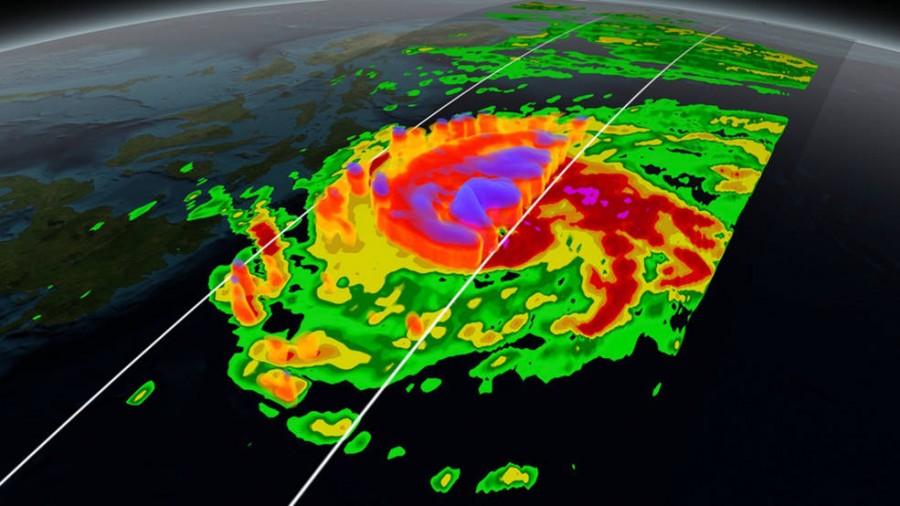
Credits: NASA/SVS
Ten years after Hurricane Katrina formed in the Atlantic, construction of NASA’s next-generation hurricane-observing satellite mission now is underway in Texas.
NASA’s Cyclone Global Navigation Satellite System (CYGNSS) mission, a constellation of eight microsatellites, will improve hurricane forecasting by making measurements of ocean surface winds in and near the eye wall of tropical cyclones, typhoons and hurricanes throughout their life cycle.
CYGNSS will allow scientists to probe the inner core of hurricanes from space frequently for the first time, using both direct and reflected signals from existing GPS satellites to obtain estimates of surface wind speeds over the ocean. These measurements will advance forecasting methods by providing data that can lead to better predictions of hurricane tracks, intensities and storm surges.
As the CYGNSS and GPS satellites circle Earth, their interaction will provide a new image of wind speeds over the entire tropics every few hours, whereas a single satellite supplies a new image every few days. The ability to better monitor and predict the rapid changes in hurricane intensity, such as those observed with Hurricane Katrina, is critical to hurricane forecasters and U.S. coastal communities.
Earlier this summer, the CYGNSS mission successfully passed two major NASA reviews, clearing the way for integration, testing and preparation of the microsatellites for flight.
“These reviews were a major milestone for CYGNSS, marking the end of the detailed design and planning stages of the mission and the beginning of flight hardware assembly,” said Chris Ruf, CYGNSS principal investigator at the University of Michigan, Ann Arbor. “We are now in the last phase of the mission prior to launch and the beginning of a new era in hurricane observations.”
The University of Michigan is directing the CYGNSS mission for NASA, including satellite design and production and science data processing. The CYGNSS constellation will be deployed into low-Earth orbit with successive satellites passing over the same region approximately every 12 minutes. The Southwest Research Institute in San Antonio is building and testing the CYGNSS microsatellites and will host the mission operations center at its Boulder, Colorado location.
Assembly of the first microsatellite began Aug. 14, with the other seven to follow in the next few weeks. The body of each satellite measures roughly 20-by-25-by-11 inches, slightly larger than a standard carry-on suitcase. When fully assembled, the satellites will each weigh about 64 pounds. With the solar panels deployed, each microsatellite will have a wingspan of 5.5 feet. The satellites will be stacked for testing in early 2016.














